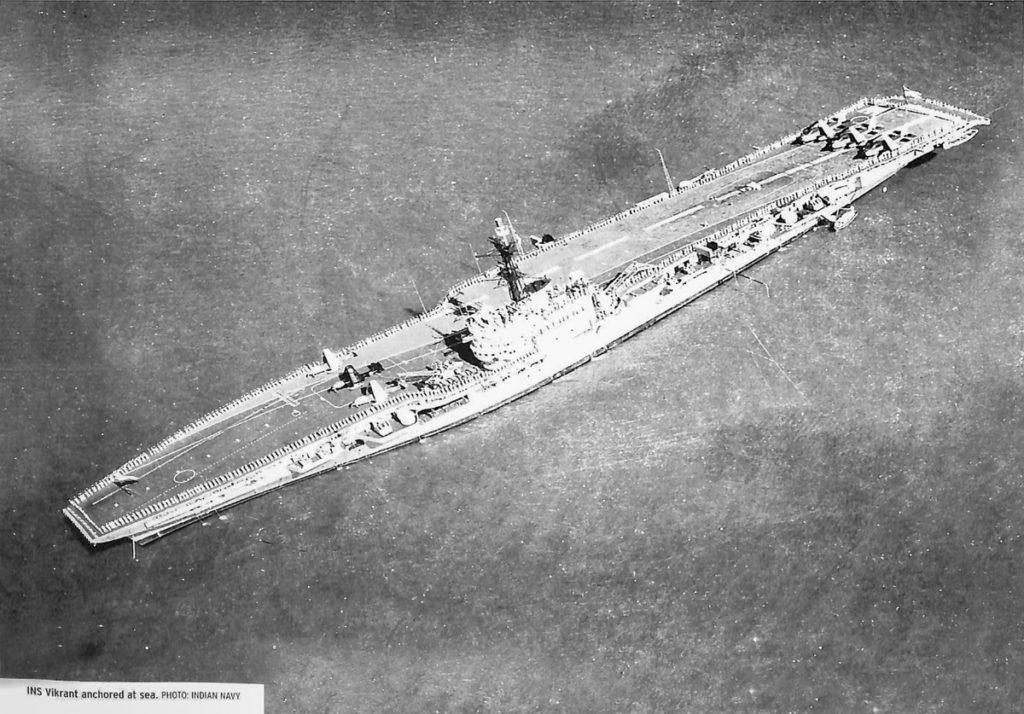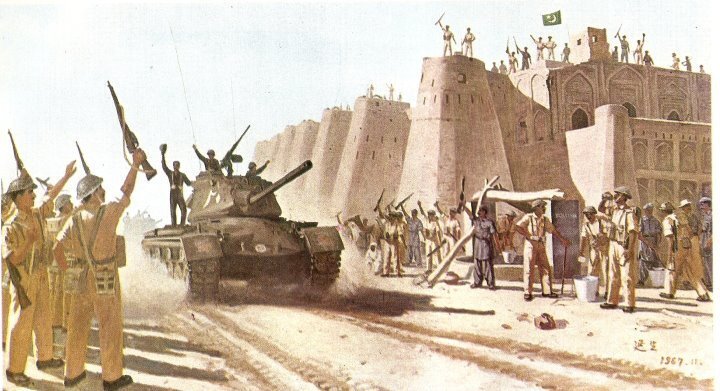President Ayub Khan’s brief address to the nation on 6th September 1965 was a moment when the history of Pakistan took a turn. It was a moment which we remember for exactly what we were doing or where we were, when it happened. On that day, a few minutes past eleven in the morning and barely seventeen years old I found myself entering the office of the President Inter Services Selection Board Kohat as an officer candidate just as Ayub’s authoritative words ‘Mere aziz hum watano’ (my dear countrymen) boomed across the room from a small transistor radio words which were to electrify an entire nation.
President Ayub spoke of how that morning, the Indian army had attacked Lahore at three places with an infantry division and three armor regiments and that Pakistan was at war with India. Students of military strategy know very well that a force of that proportion can reach its objective without much difficulty, given the small distance between the International border and outskirts of Lahore.
It was therefore no empty boast from the Indian army Chief General Chaudhary who wanted to celebrate the evening at one of Lahore‘s most famous addresses. The attackers were stopped dead in their tracks by a much smaller force who made history by their sheer tenacity and grit before reinforcements arrived and earned gratitude of the entire nation.
At sea the Pakistan Navy was about to write history of its own as all ships of its flotilla i.e. PNS Babur (with Captain MAK Lodhi in command), Khaibar (Captain A Hanif), Badr (Commander A H Malik), Tippu Sultan (Commander Amir Aslam), Jahangir (Commander K M Hussain), Shah Jahan (Commander Zafar Shamsie) and Alamgir (Commander I F Qadir) left harbor in the morning shortly after receiving orders to proceed to their pre-assigned war stations.
PNS Tughral was the only ship left in harbor as it was undergoing a re-fit program. It goes to the credit of officers and men of technical services whose dedication ensured such a feat with old and steam driven ships an accomplishment which will be hard put to match today. Other than that if there is one person who deserves a mention, it would be Commodore Saleemi, who as the previous Commodore Commanding Pakistan Navy Flotilla during the Rann of Kutch emergency had worked up the ships to the pinnacle of operational readiness. As a small digression, Saleemi was a tough sailor and a hard task master who as Commanding Officer PNS Jhelum, had marched ahead of a Pakistan Navy contingent through the streets of London for nearly eleven miles (some say seventeen) on the occasion of the Queen’s coronation in 1952.
Pakistan Navy’s only submarine PNS/M Ghazi (with Commander K R Niazi in command) had sailed from Karachi three days earlier on 3rd September and on 4th September, she was ordered to shift her patrol to within a radius of 50 miles off Bombay (Mumbai). It performed its task superbly and kept the Indian Navy bottled up in its various ports and bases.

Intelligence reports towards the end of August 1965 reflected presence of Indian Navy heavy cruiser INS Mysore, Frigates Beas and Brahmaputra at Calcutta. They were ordered to proceed to west coast to join other destroyers and frigates and were tracked by PN through HF/DF all the way till Cochin. The aircraft carrier INS Vikrant and another heavy cruiser INS Delhi were refitting at Bombay while carrier borne aircraft had all been shifted to Jamnagar by 5th September.
Around noon on 7th September, all the ships at sea were alerted about the impeding attack on Dwarka at night. They were ordered to be in Initial Position (IP) by sunset. From there they were required to proceed towards Dwarka for bombardment at midnight and on completion withdraw to its arc of patrol. The force was cautioned about possible presence of some enemy surface combatants and air threat.
There has been some debate as to why Dwarka was chosen for the strike. The intended objectives in the prevalent environments of 1965 were very logical and were, a) to draw enemy units out into barrier laid by PNS/M Ghazi, b) destroy the IAF’s only bomber guidance beamer in the area for directing strikes from Jamnagar against Karachi, c) to cause alarm and confusion along the Indian coast since Dwarka was the centre business in the region, d) possible diversion of air effort from land operations towards seaward defense of Indian coast and lastly e) to gain psychological advantage by striking deep into Indian territorial waters.
In order to achieve the above, it was essential to retain an element of surprise. By using a combination of restrictions and relaxations in Electronic Emission Policy on various communication circuits and navigational, surface and air surveillance radars, the force succeeded in keeping its location disguised as it steamed towards the target on a south easterly heading at best possible speed.
There was no luxury of GPS in those days something which is taken for granted these days. With an overcast sky, cirrocumulus scudding across the sky, it was not possible to do an evening star shoot either. With darkened ships, navigational lights switched off, restrictions on navigational radar, difficulties were experienced in station keeping but the crews did an excellent job in the given circumstances in getting to the firing line in time.
The Bombardment Orders required units to be in position south south west of Dwarka Light at a distance of six miles and steer north westerly course. The ships were to be seven cables apart in what was called formation ‘Whisky 81’ one of the formations worked out by Fleet Headquarters during the Rann of Kutch emergency for switching over expeditiously to surface action from air defense mode and vice versa. All units were to commence firing simultaneously on receipt of code word ‘Somnath’ and authorized to fire fifty rounds of high explosives each. Due to restrictions on communication circuits, Bombardment orders were passed to ships either by heaving line or visual signaling.
The passage towards Dwarka was not without some anxious moments. It is not intended to stretch my claim on 1965 war beyond what is stated in the beginning of this piece, but on this 50th anniversary of that daring effort, one can be honest in admitting that some mistakes were made. Such introspection is necessary for future generations to understand that there will always be hiccups at sea but they have to be managed in the best possible manner and not feared.

As it usually happens, the hiccups came in the last sixty minutes before ‘H’ Hour and later when the force was withdrawing from the scene of action. It all began when one unit followed by another reported unidentified surface contacts and mission commander almost prepared units to engage it with main guns. Mercifully, the contact turned out to be a merchant vessel. An attack on the merchantman would have given away the element of surprise and possibly jeopardized the whole operation.
When in the vicinity of Dwarka, a crucial pilotage aspect of utilizing perfectly good twenty fathoms line was overlooked resulting in loss of 2000 yards in range advantage. In simple words, a check with crossing the twenty fathoms line would have given a far more accurate final position and avoided unnecessary discussion on target range just before the shoot. It would also have helped better placement of ships in the formation with three different gun calibers. Put yet another way, a four inch gun will be hard put to lob a shell to a target 14,000 yards away.
During the withdrawal phase, appearance of spurious radar contacts, ‘sighting’ and even shooting down of low flying aircraft created some confusion. The confusion compounded just as the number of air contact reports multiplied. Whether there were actually any aircraft in the area at the time or not will never be known. But all this can be forgiven since we mariners are prone to seeing all kinds of crazy objects at sea in half light so why this fuss about mistaking a light in the sky for an enemy aircraft in the heat of the moment?
But it was the Indian Navy Chief Vice Admiral Soman and Defense Minister Y B Chavan who take the cake for sheer craziness in their memoirs. In spite of President Ayub declaring that Pakistan was at war with India, Soman wants the world to believe that he was prohibited to fight against Pakistan Navy and Chavan thought that defending Andaman and Nicobar Islands from an imaginary Indonesian attack was far more important than war against Pakistan. This is not being made up – it is actually in their memoirs.
Many officers and sailors who participated in the 1965 war are no more with us and have since passed away leaving behind memories of Pakistan Navy’s finest hour and an example for younger generation to follow in their footsteps. As we celebrate the 50th anniversary of defending our motherland a small prayer for our departed companions is in order – May Almighty Allah bless their souls and may the earth rest lightly on their mortal remains. Amen.




